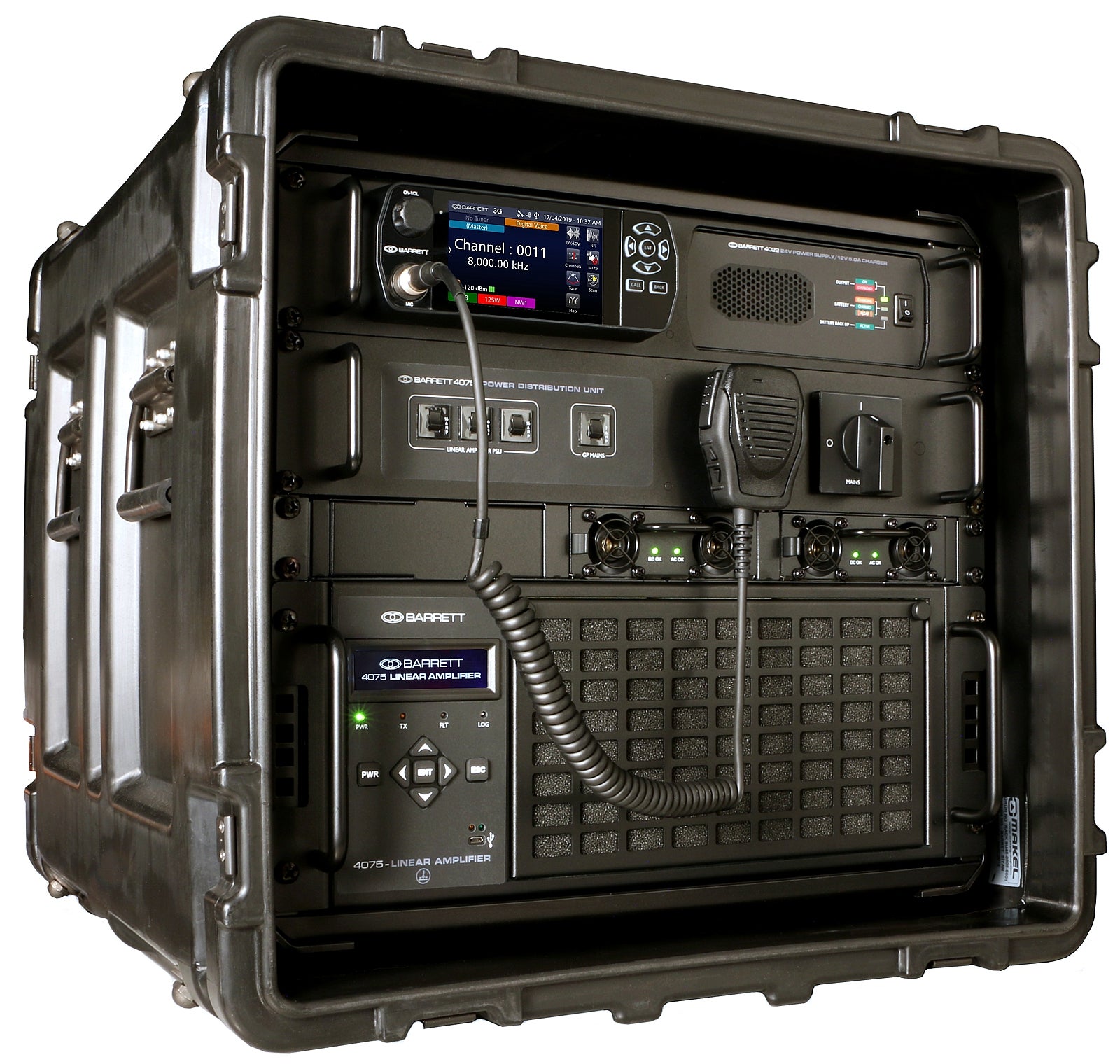
As society becomes steadily more hooked on streamed entertainment, whether that’s film, music or TV, we’re all too familiar with the consequences of the internet going down. As we rely more heavily on the infrastructure that supports streaming, we have fewer physical back-ups on hand (whether CDs, DVDs or vinyl). This is essentially the same story when it comes to long-distance communications.
While it is true that HF radio is an older technology, this does not mean it is out of date. With all the extra functionality that comes with modern smartphones or laptops, why would someone bother with an HF radio? The answer is that HF has a trick or two up its sleeve that the latest iPhone will never be able to match.

Access deeper industry intelligence
Experience unmatched clarity with a single platform that combines unique data, AI, and human expertise.
As Andrew Burt, CEO at HF radio equipment designers and manufacturers Barrett Communications, points out, “What happens when there’s a natural disaster or emergency and all the major communications systems are down? There’s no signal for mobile and there’s no internet.
“All those technologies depend on a huge amount of physical infrastructure, which until restored, following an emergency, makes the technology useless. So, how do you service the immediate communications requirement in the interim? The attraction of HF is that it is rapidly deployable, establishing communications quickly and over vast distances.”
The perfect technology for an unstable climate
As the world is increasingly unstable and natural disasters appear to be on the rise, Burt says he has definitely seen a shift in attitudes back in favour of HF. In particular he cites Barrett’s rapidly developing market in the US, with government and non-government organisations, from regional airports to hospital systems and power stations, returning to HF. “In the US there is a long-standing desire to be self-sufficient, to be prepared for different eventualities and be in control,” Burt explains.
He adds that while Europe has seen a slower revival, it is stirring there as well. “The climate in Europe is more temperate, there are fewer earthquakes and things are more controlled. But we are seeing those same demands increasing.”

US Tariffs are shifting - will you react or anticipate?
Don’t let policy changes catch you off guard. Stay proactive with real-time data and expert analysis.
By GlobalDataBarrett’s story is now more global, with manufacturing taking place both in Australia and in the US, delivering to the American market a ‘Made in America’ product. In Australia, HF radio was a natural technology for the country because of its sheer size and low population density. As Burt explains, “Australia relied on easy-to-use HF which was historically used by doctors and teachers supporting remote communities.”
Burt says the company’s roots were firmly orientated towards commercial markets but now include defence and government. “with the introduction of manpack portable equipment, Barrett’s products began to appeal to a wider set of users including police, civil, defence and peace-keeping users.”
Today almost 80% of the company’s customers are police and defence related, ranging from Naval systems to land systems; from UN peacekeeping missions to US border protection.
The always-on communications platform
One of the big advantages with HF is its reliability and always-on nature, as Burt explains, “It’s always there, it cannot be turned off and exists naturally in the ionosphere. So, there is always scope for it, but the marketplace is definitely changing.”
The main change, driven by firms like Barrett, is the drive towards easier-to-use equipment that draws on modern user experience from devices such as smartphones. Barrett is proud to have innovated and developed the next generation of HF radio systems, for example.
“Our 4050 was the first commercial touchscreen HF radio of its kind, with a host of new features such as Ethernet/Wifi connectivity, allowing remote control via mobile phone, tablets and desktop applications,” says Burt. “That ease of use and familiarity is essential, with people everywhere using smartphones with no training requirement. It’s about bringing that intuitive ease of use to the HF radio market.”
The complexity of some HF equipment and the associated training burden is something that puts possible buyers off, and it’s why Barrett designs its radios with a common user interface. “The time when HF radios were all dials and buttons are long gone, we’ve created a radio that has a more visual way of working, a more user-friendly, intuitive approach,” explains Burt.
This feeds into all its products, regardless of the end market. The user has to have an ultra-modern ease of use experience, rather than a complicated radio. In turn this has reduced the training burden. While users benefit from some working knowledge of HF, it is not essential.
As with all areas of technology, each new generation brings more automation and a better user experience, whether that is automatic link establishment (ALE) and digital voice, with the latter in particular, eliminating the white noise and crackle traditionally associated with the HF experience.
Perhaps it is natural that Burt sees the positives of HF outweighing the negatives, but he admits there are limitations. “However,” he concludes, “If you weigh up HF positives, once procured, it’s free-to-air, it’s versatile and you can use it in many roles. And crucially, it’s not reliant on any fixed infrastructure. That adds up to an impressive, reliable package.”
To get more details on the military applications of HF radios, read more here. For more about HF’s role in critical infrastructure, read this.


